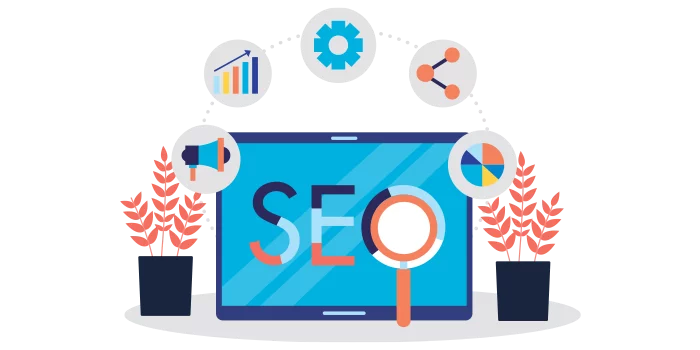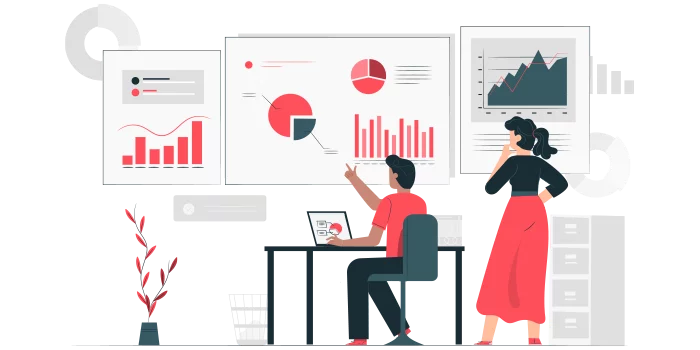12 Untold On-Page SEO Factors You Should Know!

Writing the kind of content that readers and Google like is challenging.
However, if you have already created content, you need to do extra work with on-page SEO.
If you are a newbie and do not know about on-page SEO Factor, this blog post has got you covered.
In this post, we will walk you through what on-page SEO Factors are and all the important factors of on-page SEO you need to know as a beginner.
Let’s get started!
On-Page SEO Factor & Its Significance
Anything you do on the page in order to boost its ranking is called on-page SEO.
It helps Google and readers to comprehend and digest your content.
Google analyzes your published content to make sure that it is relevant to the search query or not.
Therefore, you should target the keywords of the query on your page.
But this does not mean you should use the same keyword in your content repeatedly.
This practice is called keyword stuffing, and it can negatively impact your ranking.
A single change in your competitor’s content or Google Algorithm can kick you off that top spot. Hence, you have to stay tuned to Google updates.
You need to be very careful with your On-Page SEO practices.
12 Key On-Page SEO Factors

Off-Page SEO and On-Page SEO Both are very Important SEO Factor. But today we will Discuss Only On-Page SEO Factor. On-page can be boiled down into these three categories:
- Content
- Website architecture
- HTML
We will go through each of them individually.
Content
Content is the key to achieving perfection in your business.
SEO without content is like a stylish heavy bike without an engine – it looks amazing, but you cannot reach your destiny with it.
So you should craft top-quality content for your site or blog.
You should consider the following parameters into account in order to increase your on-page SEO Factor:
Keywords
The simplest way to reach your target audience is to talk in their language.
It means that you should include the terms they use to find their answers on Google.
Yes, we are talking about keywords.
You should incorporate keywords in the content that are highly relevant to the search query.
In simple words, you need to know what your target audience is searching for. Keeping that in mind, you can create content that is tailored to their needs.
Hence, keyword research plays a great part in on-page SEO Factor.
Expertise, Authoritativeness, & Trustworthiness
Depending on your content’s expertise, authoritativeness, and trustworthiness, Google ranks your site.
Accordingly, you should write content that is informative, highly authoritative, and trustworthy.
SEO-Centric Content Writing
Writing content that both readers and search engines appreciate is really an art.
The content that converts readers to customers is called quality content.
But it can be difficult to create content that sounds well and matches SEO parameters.
Make sure your written content adheres to the following points:
Easy To Read & Scan
First things first!
Your written content should be easy to read and digest.
Avoid including flowery and complex language in your text. Otherwise, readers will leave your page.
As a result, it will increase your bounce rate and impact your ranking.
So be careful and emphasize readability.
Short & Sweet Paragraphs
Reading lengthy paragraphs can be a hard nut to crack. In addition, it is a time-consuming task, and readers do not care about it.
Lengthy paragraphs will turn your readers away from you.
Therefore, keep your text’s paragraph brief.
Bullet Points
Bullet points enhance the readability of your content. They are easy to remember.
Accordingly, including bullet points in your content is always a nice move.
Subheadings
Incorporate as many subheadings in your content as you can. In this way, your readers will not get stuck.
Avoid Keyword Stuffing
Do not overuse keywords in your content.
Avoid this practice at once.
It was done in the past by people to game the Google system.
If you keep on practicing keyword stuffing, Google will demote your page in Search Engine Results Pages (SERPs).
How bad it would be!
Visual content
If you want readers to stay on your site for a longer period of time, you should include images, videos, and infographics in your content.
Not only does it stick your readers to the content, but it also boosts your SEO.
So consider using visual content in your text.
Website Architecture

Having a well-designed website is very significant.
A website with a logical structure can benefit from more efficient search engine crawling as well as better user experiences.
When it comes to optimizing your website’s architecture, you need to take the following factors into account:
URL Structure
There was a stage when URLs were very important for SEO.
To assist websites in ranking better, experts would make sure their keywords were included in the web addresses.
But Google tweaked the algorithm.
Furthermore, what was formerly crucial to rankings now has a considerably lower impact.
That does not imply that it is unimportant.
Search engines still take your URLs into account when calculating your total score; they simply do not have the same importance as they formerly had.
However, there is proof that they impact a site’s initial rating, and some experts think they are used to categorize pages.
This implies that although you should not make them your primary SEO priority, you also should not ignore them.
Links
Links from trustworthy websites are one of the finest methods for your website to showcase its authoritativeness.
These three types of links should be at your fingertips:
- Internal links are those that go to pages inside your own website.
- External links often referred to as outbound links, are those that go to a website on a different domain.
- Inbound links, also known as backlinks, are links that go to your page from other websites.
Inbound connections are by far the most crucial of the three.
Although they are the most difficult to achieve, they provide the most SEO value.
Site Speed
In addition to losing visitors, a slow-loading website really lowers your search ranking.
Page speed affects how well a website ranks in search results.
There are a variety of measures you can take if your website is not presently up to Google’s requirements, including:
- Optimizing the site’s images
- Benefitting from browser caches
- Minimizing redirects
- Enabling compression
Mobile Adaptive Design
The majority of people use mobile phones to make Google searches.
With that in mind, Google started giving websites with responsive designs a higher rating in mobile search results.
While ranking in these results without responsive design is still possible, Google highly advises that sites have a mobile version.
This mobile-friendly upgrade only affects search results conducted on mobile devices.
HTML
The code that structures your website’s content is called Hyper Text Markup Language (HTML).
It instructs the browser of the user on what and where to display.
Additionally, it explains to search engines what your website is about and how to rank you.
The following are some on-page SEO HTML considerations:
Red Hat
The Red Hat method prioritizes personal experience over rational thought and analysis. Since humans might be overly analytical when using data to make judgments, this can be quite useful for a digital project.
Title Tags
This is another area of on-page SEO Factor to which you need to pay attention.
This little piece of code, which enables you to give a site a title, definitely would not be enough to propel you to the top of SERPs on its own.
However, when coupled with other above-mentioned on-page components, it can help you provide context and show the relevancy of your site.
Meta Description
Despite their comparatively little use in SEO, the meta description can have two crucial advantages: It helps Google understand the purpose of your website, and more importantly, it has a significant impact on your CTRs. Better meta descriptions help searchers grasp the content of your website, which encourages higher CTR. Do not disregard them, then.
Geotagging
Despite having a global economy, the majority of commerce is still conducted locally. Improve your on-page local SEO to engage with people in your community.
While this is less crucial for large organizations, it is vital for small and medium-sized enterprises.
When concentrating on local visitors, there are three key SEO strategies to take into account:
- Enhancing and building ties with other nearby companies and organizations.
- Using third-party applications, obtaining reviews, and optimizing local listings and citations, such as name, address, and phone number (NAP), website URL, and company descriptions.
- Optimizing your local content by adding features for “near me” searches, offering material that is exclusive to an area, or purchasing a local website or blog.
Make sure to include the name of your intended market in your keyword list and use it throughout your text as appropriate.
Image Optimization
The significance of graphic assets for your website was previously mentioned, but now it’s time to go further into their technical details.
Here are some suggestions to improve yours:
- Put in SEO-friendly alt tags.
- Make sure your image is optimized for mobile phones.
- For super-fast loading, choose the proper file format and size.
- Use unique file names rather than generic ones like IMG_02134.
Final Words
There you have it: “12 untold on-Page SEO factors you should know!”
Focus on these factors and see the difference in your site ranking.
We conclude this post with one thing: Figuring out the best approach to provide searchers useful information and making sure your website is at the top of SERPs.
Your objective is to provide people with greater experiences while also proving to search engines how valuable you are.
Fortunately, these two go together.
If you have any queries about this on-page SEO Factor Guide, you can ask. We will like to hear all your queries and respond to them.
Best of luck!

